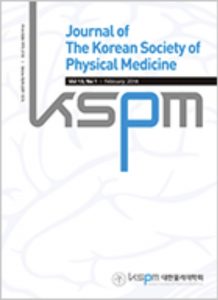Publications

The Immediate Effect of Interferential Current Therapy on Muscle Tone and Stiffness in Chronic Stroke Patients
Authors: Shin-Jun Park, Kyun-Hee Cho, Soon-Hee Kim
Affiliations: Department of Physical Therapy, GangDong University, Department of Physical Therapy, Graduate School, Yongin University; Department of Physical Therapy, Yongin University, South Korea
Journal: Journal of The Korean Society of Physical Medicine - February 2019, Volume 14, Issue 1, Pages 1-5 (DOI: 10.13066/kspm.2019.14.1.1)
Purpose: In chronic stroke patients, muscle tone and stiffness increase due to ankle spasticity. Electrotherapy may control the spasticity of patients with central nerve system damage via neurophysiological mechanisms. Therefore, this study was conducted to determine the immediate effects of interferential current therapy on gastrocnemius (GCM) muscle.
Methods: This study was a one-group pretest-posttest design and 20 stroke patients participated. The experimental group underwent interferential current therapy for GCM for 30 minutes. Muscle tone (MT) and stiffness were assessed using MyotonPRO®. After 30 minutes of interferential current therapy, MT and stiffness of the affected side and unaffected side by GCM were measured.
Results: After interferential current therapy, the medial GCM MT (Hz) was significantly reduced in stroke patients. There was a significant difference in MT between affected GCM muscles and unaffected side medial GCM muscles before intervention, but there was no significant difference after interferential current therapy.
This study was conducted to investigate the immediate effects of interferential current therapy on the GCM muscle tone and stiffness of stroke patients. A total of 20 stroke patients were recruited with a one-group pretest-posttest design. Immediate reduction of the medial GCM tone in stroke patients after interferential current therapy application for 30 minutes was observed. In addition, the asymmetric medial GCM tone of the affected and the unaffected side became symmetric. Interferential current therapy reduced the medial GCM tone in stroke patients with spasticity in the lower leg. Therefore, interferential current therapy application to stroke patients with spasticity may help patients move their ankle.
Keywords: Asymmetrical muscle tone, Gastrocnemius muscle tone, Interferential current therapy, Stroke


